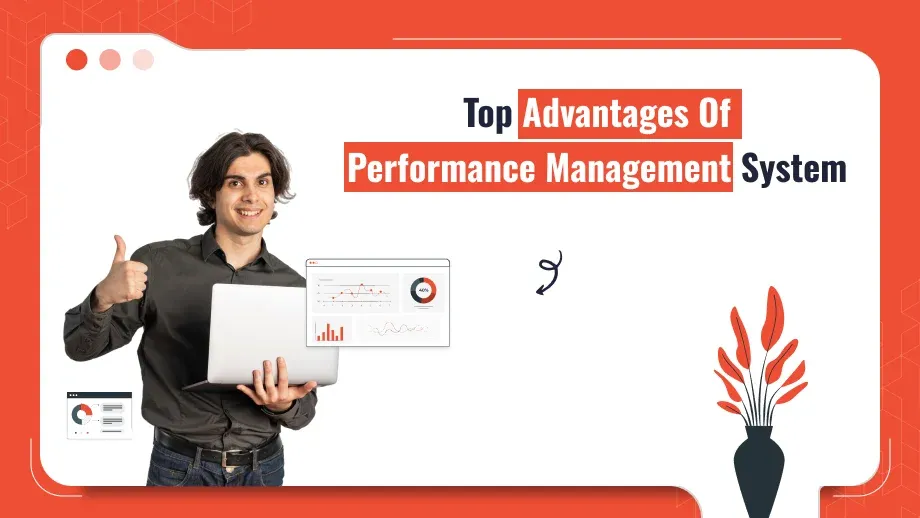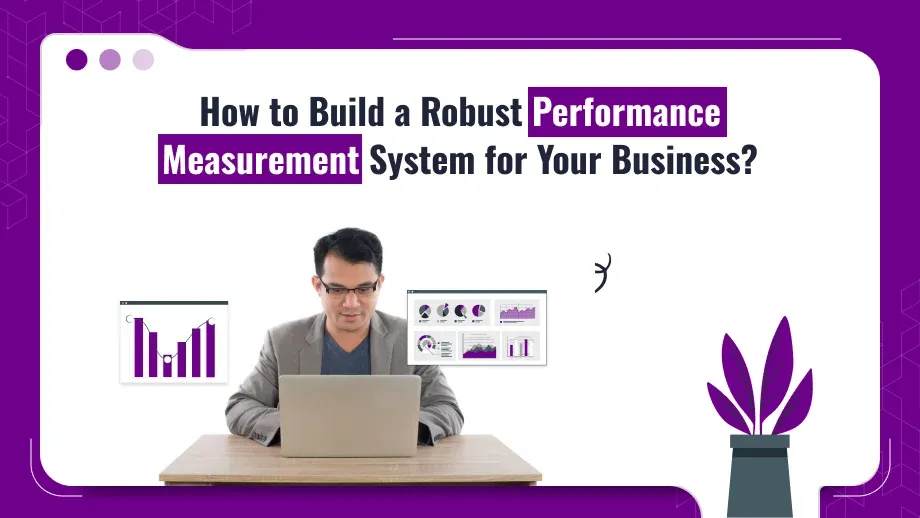
In today’s competitive exchange environment, organizations must continuously see for ways to make strides effectiveness, advance agent engagement, and alter individual execution with corporate objectives. A solid Execution Organization System (PMS) is essential for finishing these goals, particularly in the space of Human Resource Organization (HRM). In this web diary, we will explore the inclinations advantages of performance management system, its theoretical foundations, and how a well-designed system can lift both specialist execution and organizational success.
Understanding Performance Management
Performance management tool is a nonstop plan counting the orchestrating, checking, and exploring of employees’ work targets. Its fundamental reason is to ensure that individual commitments are balanced with organizational targets, progressing a culture of duty and transparency.
In HRM, a Performance Management System (PMS) goes past annually execution examinations, solidifying nonstop feedback, enhancement openings, and data-driven decision-making. By executing a crucial PMS, businesses can recognize fitness gaps, support movement orchestrating, and boost by and huge productivity.
Theories of Performance Management
Several speculations bolster progressed execution organization systems. Understanding these speculations can grant understanding into how organizations can arrange and execute practical PMS. Three key theories include:
Goal-Setting Theory – This speculation, made by Edwin Locke, sets that clear, challenging destinations can inside and out progress specialist motivation and execution. When specialists have well-defined targets, they are more likely to stay centered and committed to finishing them.
Expectancy Theory – Vroom’s Trust Speculation suggests that agents will be moved when they acknowledge their endeavors will lead to needed comes about. In execution organization, this speculation emphasizes the noteworthiness of interfacing execution to rewards, ensuring that agents see a clear affiliation between their work and the affirmation they receive.
Equity Speculation – Adams’ Esteem Theory centers on sensibility in the work environment. Agents compare their commitments and rewards to those of their peers, and any seen ponderousness can lead to dissatisfaction. A direct execution organization system ensures tolerability in evaluations, progressions, and rewards, developing a sense of esteem among laborers.
Unlock the full potential of your workforce with a tailored performance management system.
Boost productivity, align goals, and drive business success today!
Advantages of Performance Management System
Aligns Person and Organizational Objectives
One of the key focal points of a Execution Administration Framework is the arrangement it cultivates between person worker destinations and the bigger objectives of the organization. By clearly characterizing execution desires, workers get it how their work contributes to the company’s in general victory. This arrangement not as it were boosts inspiration but too guarantees that representatives are centering their endeavors on errands that include esteem to the business.
Encourages Nonstop Criticism and Improvement
Conventional execution surveys that happen once a year are frequently inadequately for tending to the energetic needs of today’s workforce. A present day Performance Management System in HRM emphasizes nonstop criticism, permitting directors to lock in in customary check-ins with their representatives. These continuous discourses make a culture of nonstop improvement, empowering representatives to address challenges in real-time and construct on their strengths.
Improves Representative Engagement and Maintenance
Representative engagement is closely tied to acknowledgment and openings for development. A Execution Administration Framework that joins standard input, rewards, and improvement activities keeps workers locked in and persuaded. When workers feel esteemed and see clear pathways for progression, they are more likely to stay with the company, lessening turnover and the related costs of rehiring and retraining.
Enhances Responsibility and Straightforwardness
A key component of any successful Execution Administration Framework is responsibility. By setting clear execution measurements and markers, workers know precisely what is anticipated of them and how their execution will be measured. This clarity evacuates uncertainty and guarantees that all representatives are held to the same measures, advancing reasonableness and straightforwardness in the assessment process.
Facilitates Representative Advancement
Preparing Execution administration is not fair around evaluating current execution; it’s moreover around distinguishing zones for future improvement. A well-designed PMS makes a difference HR distinguish aptitude crevices, permitting companies to contribute in focused on preparing programs. These programs not as it were bolster worker development but too contribute to the in general advancement of the trade by making a more competent and gifted workforce.
Boosts Generally Efficiency
a Execution Administration Framework in put, workers are superior prepared to set reasonable objectives and screen their advance. Clear targets, customary criticism, and a center on persistent advancement offer assistance representatives remain on track and center on what things most. This organized approach upgrades effectiveness and efficiency by killing useless exercises and cultivating a results-oriented work culture.
Enables Data-Driven Choice
Making One of the critical benefits of utilizing a Execution Administration Framework is the accessibility of information to track worker execution over time. This information can be utilized to make educated choices with respect to advancements, recompense, or distinguishing high-potential workers. By analyzing execution patterns, businesses can make alterations to their methodologies and intercessions to improve by and large organizational performance.
Supports Progression
Arranging Distinguishing and supporting high-potential workers is basic for guaranteeing the long-term victory of an organization. A PMS permits HR experts and directors to track representative advancement and execution over time, making it less demanding to recognize future pioneers. With this information, organizations can construct viable progression plans that guarantee progression when key workers resign or take off the company.
Drives Organizational Development
When workers perform at their best, the organization benefits. A Execution Administration Framework drives efficiency, makes strides representative engagement, and guarantees responsibility, all of which contribute to the organization’s development. By adjusting person and organizational objectives, businesses can accomplish more noteworthy productivity and remain ahead in an progressively competitive market.
Improves Communication
Between Workers and Directors Successful communication is the spine of any fruitful execution administration framework. By cultivating open communication between workers and directors, a PMS guarantees that desires, challenges, and advance are talked about frequently. This continuous discourse not as it were reinforces connections but too empowers both parties to work collaboratively to make strides execution and accomplish shared destinations.
Consolidating a Performance Management System in HRM is not fair a instrument for measuring worker execution; it gets to be a key resource when planned to adjust person goals with organizational development. Advanced organizations are progressively realizing that performance management systems ought to not exclusively center on examinations but instep make a formative pathway for workers, permitting them to reach their full potential whereas too contributing to the company’s goals.
Practical Execution of Execution Administration Framework in HRM
To really use the preferences of execution administration, businesses must center on coordination the framework into their broader HR methodologies. Here are a few commonsense steps organizations can take:
1. Set Clear, Quantifiable Goals
Representatives perform best when they know precisely what is anticipated of them. Setting Keen (Particular, Quantifiable, Achievable, Important, and Time-bound) objectives guarantees that each person gets it their part and can contribute definitively to organizational objectives.
2. Regular Check-ins and Criticism
Yearly evaluations are rapidly getting to be a thing of the past. Instep, businesses ought to execute standard execution audits, input sessions, and coaching openings. This hone empowers continuous communication between supervisors and workers, cultivating a culture of believe and ceaseless improvement.
3. Use Innovation to Bolster PMS
HR innovation, such as cloud-based Execution Administration Frameworks, permits organizations to track worker execution, analyze information, and make real-time alterations to progress productivity. These frameworks can moreover computerize ordinary assignments like setting updates for criticism sessions or compiling execution reports, liberating HR experts to center on more vital tasks.
4. Employee Improvement Plans
One of the most prominent benefits of a HR performance management framework is its capacity to recognize ranges where workers may require assist improvement. Through person improvement plans, companies can contribute in preparing and upskilling, guaranteeing that workers develop nearby the organization. This too underpins progression arranging by sustaining future leaders.
5. Tie Execution to Rewards
Representative acknowledgment plays a crucial part in the victory of any Execution Administration Framework. When representatives see a coordinate interface between their execution and rewards, such as rewards, advancements, or openings for development, they are more propelled to perform at their best.
6. Continuous Observing and Alterations
Execution administration ought to be adaptable. As trade targets alter, so ought to person objectives and execution desires. Ceaseless observing permits organizations to alter procedures as required, guaranteeing that the framework remains adjusted with the in general trade technique.
Conclusion
Implementing a Execution Administration Framework in HRM gives various benefits for both workers and the organization. From adjusting person objectives with corporate goals to advancing responsibility, nonstop advancement, and data-driven decision-making, an successful PMS is vital for long-term victory. By joining the hypotheses of theories of performance management and centering on straightforwardness and decency, businesses can make a culture of brilliance that drives both worker fulfillment and organizational development.





